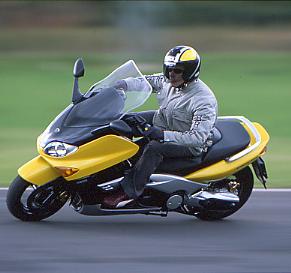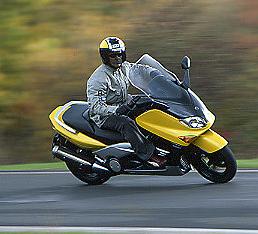| |
Starting Project : Obsessing about the Riding Experience
Mr. Suzuki has been involved primarily in motorcycle chassis design since joining YMC in 1974, and what has characterized many of the models he has worked on Yamaha's pioneering 4-stroke models of the "XS" and "GX" series and the 2-stroke supersport model "TZR250" and the "R1-Z" is that they were models where the running and handling performance was the critical element.
Among his big successes had been the "YSR50," a hit model that eventually sold 40,000 units as a racer replica offering an exciting ride that belied the machine's small 50cc displacement."
It was this kind of obsession with the riding experience a machine could offer that also became an important factor when the development team began to hash out their priorities for the new model. It was decided that their primarily goal would be a machine with "performance to excite the sports-minded user" that created "a whole new world" of riding fun, while still giving sufficient importance to its functions as an everyday urban commuter.
But the team realized from the start that this would be a difficult task if they took the Majesty as their base model. The new concept called for a whole new structural design. As the first step, Mr. Suzuki and his team headed for Europe to survey the market using the Majesty and other maxi class scooters in the actual road and traffic conditions of Europe's principle markets.
"For two weeks we rode the Italian autostrada and the German autobahn and around the city streets of Rome.... What impressed us most in Europe was the 250cc engine's lack of power for passing cars and trucks running at 100`120 km/h on expressways. It made us painfully aware of the need for a stronger running scooter," recalls Mr. Suzuki.
Also, in interviews with local riders Mr. Suzuki learned about another problem involving riding position that he never would have been aware of in Japan. The Majesty was originally developed primarily for the Japanese market, which meant that the seat height was set rather low. For many Europeans with their larger builds this resulted in riding position with a rather cramped knee bend. It was clear that there was a need to developed a position that was a more comfortable and suited for sports type riding.
|
|
 |
| The TMAX fits perfectly
in the scenes from the city to countryside touring on the
expressway. |
 |
  |
|

